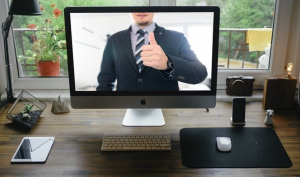Solo practitioners and those at small and boutique firms who demonstrate patience will set the tone for professionalism, collaboration and client service.
It has been one year since the United States declared the COVID-19 pandemic a national emergency. The judicial system continues to be jammed up but small law firms can still make a big impact by achieving favorable results for clients.
Our small law firm is like many others because, against the backdrop of the pandemic, we had to find the special balance of fierce advocacy and personalized service clients expect and deserve. We proudly secured six- and seven-figure awards in verdicts and settlements on behalf of injured victims and their families during the most uncertain period in modern American history. Much of that success depended on a willingness to innovate and reevaluate strategies.
Below are some steps we took in 2020 that may help other small firms succeed as they adapt to this evolving legal landscape.
Step 1. Embrace Emerging Technology and Electronic Communication
Practicing law has historically relied on in-person appearances, but the venue has changed. You can appear for court without leaving your own office. The steps in your years-long routine characterized by traveling, elevators and hallways are being replaced with digital waiting rooms. Its convenience should not make you too lackadaisical – you should still prepare and show up on time to demonstrate that you take this new process seriously.
Use this opportunity to get comfortable presenting through a screen. This is a chance for you to strengthen your video and digital skills, whether you are a bit camera-shy or just aiming to be more presentation-savvy. Also consider buying an external microphone so that even if your video is unstable, your voice will be transmitted clearly.
Streaming platforms that specialize in jury trials are emerging – and while they are being refined, the providers are hosting mock trials to demonstrate their safety and efficiency. Take advantage and see how you can get involved – you’ll also get a better feel for what type of security measures you will need for real online or digital trials. Consult with your local or state bar association for referrals and to keep up with the latest innovations.
How you look and sound will continue to be crucial. Investing in technology will help set you apart from your opponent. Our office has invested in screens with cameras behind the screen, so that you never loose eye-contact with your audience. We have invested in better lighting and backdrops, and a teleprompter for use during openings and closings. While we all long to be back in a court room, these times can provide your firm with opportunities to gain a competitive advantage if you embrace the technology that now services our new legal reality.
Step 2. Enhance Virtual Client Service
Client service is the top priority for nearly all small law firms. Unfortunately the initial consults and meetings need to be virtual for the sake of everyone’s health. Regard each video call with the same formality that you would if you were meeting in person.

- Turn off audible email and phone alerts.
- Keep your computer or phone in your direct line of sight, and not down or to the side.
- Make eye contact.
Your clients are real people with real challenges who are coming to you above all your peers. Being authentic and giving them your undivided attention will help you deliver that personal touch that helped build your reputation.
Step 3. Realistically Approach Bench Trials And Make Your Mediations Dynamic
Because of emerging health and safety risks, we know that jury trials will not be the preferred venue for new litigation. Bench trials, where the judge makes the procedural decisions, hears evidence and renders the verdict, will maintain its popularity for the foreseeable future. There are various benefits to bench trials, such as:
- Speedier proceedings and resolutions.
- Judges tend to be more neutral than jurors.
- Judges will apply certain legal rules and procedures, particularly as cases become more complex.
Attorneys for plaintiffs and defendants need to accept that bench trials will likely be the path to achieving resolution for their clients. Strategizing your case with this in mind will strengthen your cases from the outset if you do make it to trial. Additionally, your clients will be better served if you put as much thought into presenting your case at mediation, as you used to put in to presenting your case at trial. The attorney for your opponent may not be willing to stipulate to a bench trial. In that case, mediation may be your best opportunity to obtain a result for your client in any reasonable amount of time. Our firm has incorporated the use of pre-recorded PowerPoint presentations at mediation, which include accident animations, interviews with our experts, and testimony from damage witnesses. Mediators and the lawyer and adjuster on the other side are human beings, and they all have an eye on what the jury will hear at trial when assessing the settlement value of your case. Making your mediation presentations dynamic as possible will produce better settlement outcomes for your clients.
Step 4. Be More Willing to Negotiate
Many lawyers live for, and love, going to trial. Our firm certainly does. But we also know that a settlement is often the most pragmatic way to resolve a suit.
One of our biggest settlements in 2020 was on behalf of a motor vehicle accident victim critically injured by a distracted driver. The defendant in this case was one of the 20 largest employers in San Bernardino and the second-largest university system in California. Many well-funded defendants have historically felt they discourage litigation by dragging on a matter for years and continue to get away with it by using COVID’s impact as an excuse. We were never intimidated and saw through that approach in 2020.
By successfully transitioning to electronic and video communication, building in more flexibility to our strategy and keeping our client’s goals in mind, we eventually secured a $3.25 million settlement.
A willingness to negotiate complements our final step…
Step 5. Be Patient
Let’s face it, patience was already in short supply prior to COVID. The digital age was already getting us accustomed to instant gratification in many facets of our lives.
Solo practitioners and those at small and boutique firms who demonstrate patience will set the tone for professionalism, collaboration and client service. For example, the last eight months of the case we mentioned in Step 4 took place during the height of the pandemic, which was quite challenging when considering the defendant’s resources. But perseverance will lead to securing the most favorable outcome for your client.
Despite the hurdles posed by the pandemic, and with a special consideration for the people and institutions severely impacted, our firm saw the past year as an opportunity to do our best work.
Once we got in the habit of following the steps above, we experienced successes in and out of the virtual courtroom that renewed our enthusiasm for the business and practice of law.
The time saved just from traveling can be used to focus on delivering better client service and making more compelling arguments before a judge. By adapting to changes in the legal landscape, setting manageable expectations and harnessing technological offerings, small law firms can successfully litigate during COVID against even the most well-funded opposition.


Join the conversation!